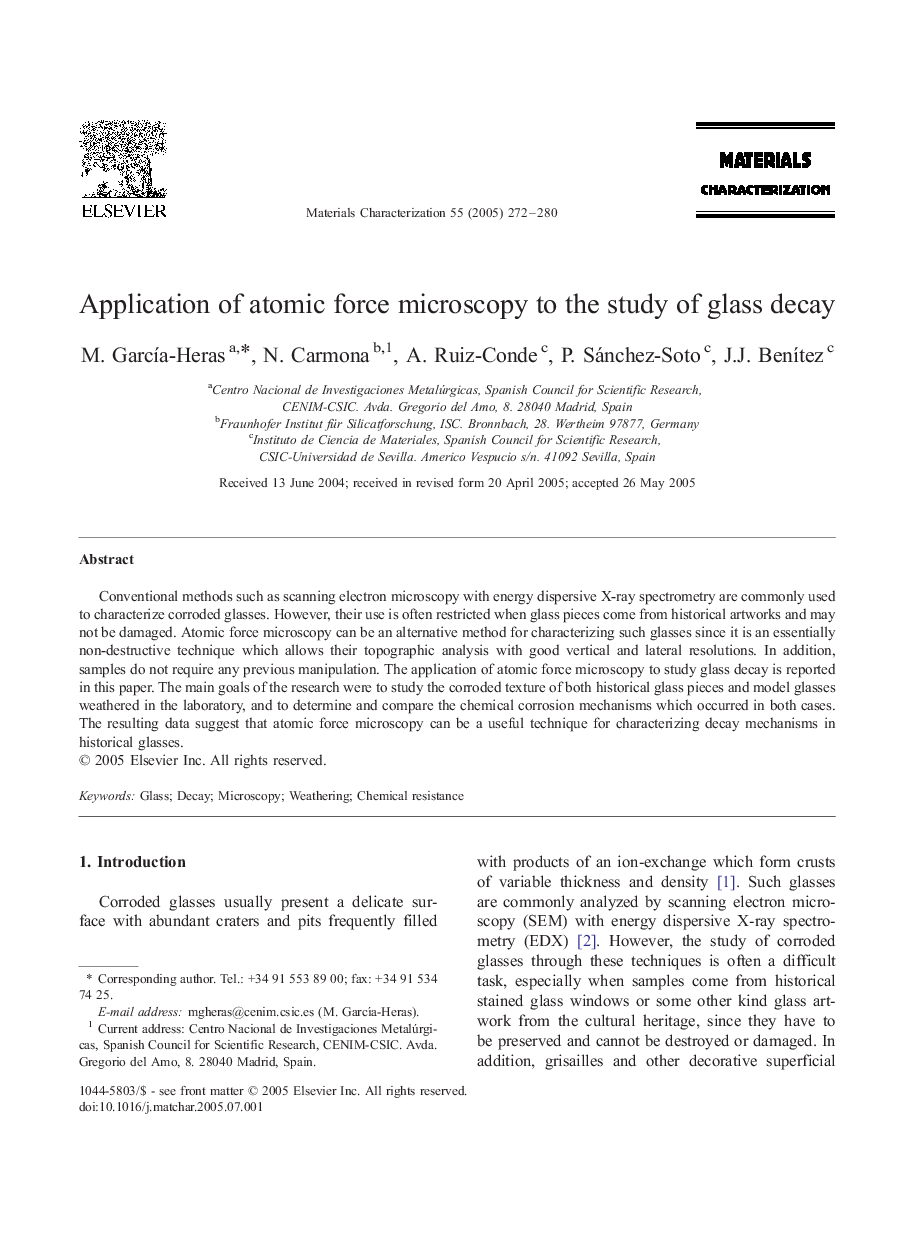| Article ID | Journal | Published Year | Pages | File Type |
|---|---|---|---|---|
| 9795226 | Materials Characterization | 2005 | 9 Pages |
Abstract
Conventional methods such as scanning electron microscopy with energy dispersive X-ray spectrometry are commonly used to characterize corroded glasses. However, their use is often restricted when glass pieces come from historical artworks and may not be damaged. Atomic force microscopy can be an alternative method for characterizing such glasses since it is an essentially non-destructive technique which allows their topographic analysis with good vertical and lateral resolutions. In addition, samples do not require any previous manipulation. The application of atomic force microscopy to study glass decay is reported in this paper. The main goals of the research were to study the corroded texture of both historical glass pieces and model glasses weathered in the laboratory, and to determine and compare the chemical corrosion mechanisms which occurred in both cases. The resulting data suggest that atomic force microscopy can be a useful technique for characterizing decay mechanisms in historical glasses.
Related Topics
Physical Sciences and Engineering
Materials Science
Materials Science (General)
Authors
M. GarcÃa-Heras, N. Carmona, A. Ruiz-Conde, P. Sánchez-Soto, J.J. BenÃtez,
